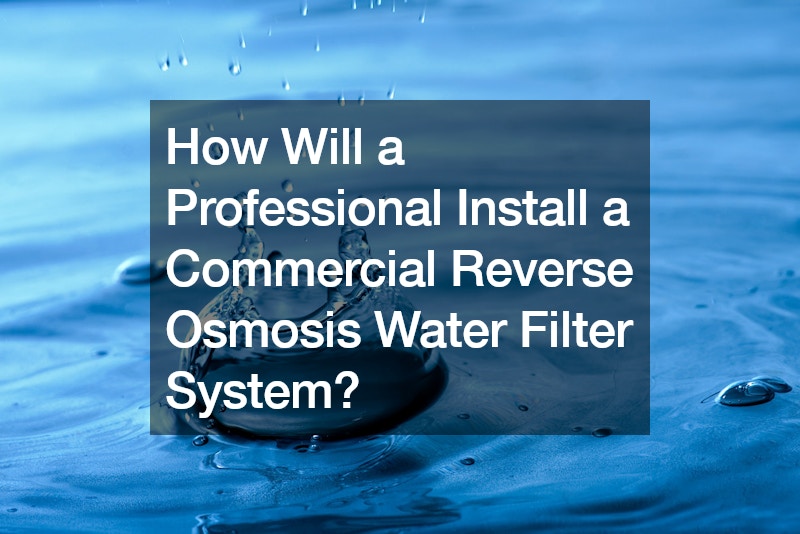How Will a Professional Install a Commercial Reverse Osmosis Water Filter System?

Installing a commercial reverse osmosis water filter demands meticulous planning and expertise. First, the installer assesses the site, considering water quality, space availability, and plumbing requirements. Next, they meticulously assemble the filtration system, integrating pre-filters, reverse osmosis membranes, and post-filters to ensure optimal performance.
Once assembled, the system undergoes rigorous testing to guarantee its efficiency in removing dissolved solids from water. The installer carefully monitors pressure levels and flow rates, making adjustments as necessary to achieve the desired purification standards.
Maintenance protocols are established to uphold the system’s functionality and longevity following installation. Regular servicing involves filter replacements, membrane cleaning, and monitoring of critical parameters like TDS (Total Dissolved Solids) levels. This ensures consistent, high-quality water output, essential for applications such as pool water filtration services.
For specific applications like calcium hardness for pool water recycling, additional considerations may be necessary. Installers might incorporate specialized treatments or adjust system settings to address unique water composition requirements. Ultimately, the professional’s expertise ensures that the commercial reverse osmosis filter operates seamlessly, delivering clean, purified water for diverse industrial and commercial purposes.

Installing a commercial reverse osmosis water filter demands a skilled approach customized to the site’s specific needs and application. Through meticulous planning, precise execution, and ongoing maintenance, professionals ensure the reliability and efficiency of these vital water purification systems.







